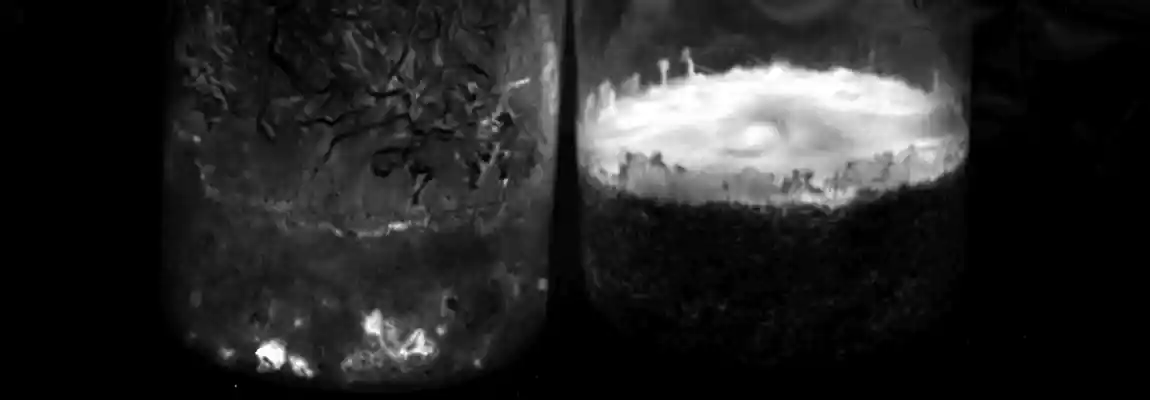
Testing bioluminescence imaging using luminescent fungi
 The LemnaTec PhenoAIxpert ES is dedicated for bioluminescence-related applications. Such bioluminescence naturally occurs in several organisms, such as some fungi, firefly, or marine organisms. However, these naturally bioluminescent organisms usually are not the target of investigation for the PhenoAIxpert ES customers. In research, bioluminescence serves as genetic marker, or as marker for microbes and our customers apply the PhenoAIxpert ES to monitor such marked gene products or microbes at whole plant level.
The LemnaTec PhenoAIxpert ES is dedicated for bioluminescence-related applications. Such bioluminescence naturally occurs in several organisms, such as some fungi, firefly, or marine organisms. However, these naturally bioluminescent organisms usually are not the target of investigation for the PhenoAIxpert ES customers. In research, bioluminescence serves as genetic marker, or as marker for microbes and our customers apply the PhenoAIxpert ES to monitor such marked gene products or microbes at whole plant level.
When we prepare a PhenoAIxpert ES for a customer, we need to check the function, of course. This means that we need to prove that the system’s camera actually records bioluminescence. However, we must not use bioluminescence-labelled microbes or plants with labelled gene products at our facility, as they count as genetically modified organisms, and EU and German laws do not allow to work with GMOs if you don’t have a dedicated secured laboratory. To overcome this issue, we have acquired a culture of a naturally luminescent fungus (Panellus stipticus). The image shows two culture bottles with the luminescent fungus at different ages (right: 3-4 weeks; left: 6 months). The bottles have a height of approximately 10 cm. The image was taken with the PhenoAIxpert ES in-built high sensitivity camera at long-time exposure. With such images, we ensure that the system works properly before handing it over to the customer.
For the application of the PhenoAIxpert ES with bioluminescent samples, the luminescence must be recordable the camera, i.e. it must be possible to record the luminescence from a distance at the surface of the sample.
